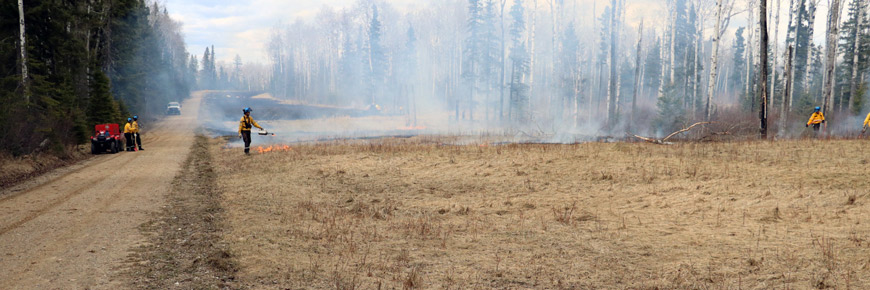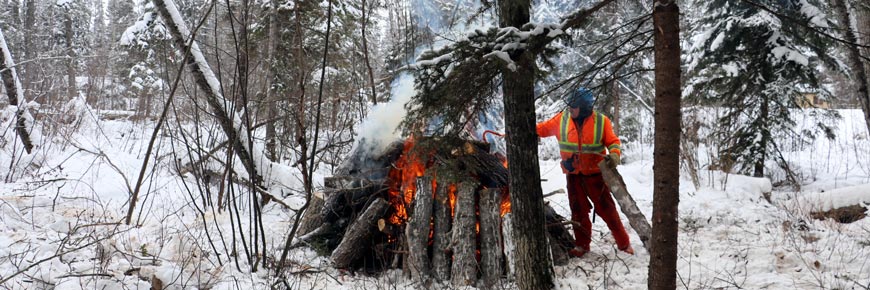
Reducing the risk of wildfires
Prince Albert National Park
Communities are evacuated and properties are destroyed in wildfires across North America every year. Many of these fires occur in the ‘wildland-urban interface’ – an area where homes and businesses are located along the edge of a forest or plant life. The townsite of Waskesiu is surrounded by 3,784 square kilometres of wilderness and is an example of the wildland-urban interface in central Saskatchewan.
Wildfire preparation is taken seriously and measures are taken to reduce the risk from potential wildfires to Waskesiu and neighbouring communities. A strong risk reduction plan is key to ensure public safety, enhance visitor experience, and protect resources.
Fuel breaks
A fuel break is an area where coniferous trees (trees with needles) and thick brush on the forest floor are removed around the outskirts of a community. Fuels burn hot and fast in dry conditions while leafy trees and bushes burn slower. A wildfire that comes into contact with a fuel break is more likely to move from the tree tops to a ground fire that is easier to manage. A fuel break helps to slow the speed of an approaching wildfire and makes time to defend the community or evacuate if required. Prescribed fire and thinning using handheld tools like chainsaws maintain the fuel break over time.
A fuel break may appear to be a major change at first glance, but the area recovers and renews within one to two years with young plant life. The renewed area creates habitat for songbirds in the open forest canopy and for elk and deer who feed on the fresh greenery below. With over 3,700 square kilometres of protected wilderness, the fuel breaks that help protect Waskesiu and Elk Ridge have little impact on the habitat of native species.
Waskesiu community fuel break
The Waskesiu community fuel break was developed in 2001-2002. About 300 hectares of forest was harvested to help reduce the risk to the townsite from potential wildfires. Prescribed fire is used each spring in sections of the fuel break to burn off highly flammable dead grass and renew the fuel break before peak wildfire season.
Fresh green grass helps bring the fire from the tree tops to the ground and slows down an approaching wildfire. This provides a strategic line to defend the community or evacuate if required. Prescribed fire is one part of a maintenance plan that keeps the fuel break effective in protecting Waskesiu from wildfire. Future plans include expanding the fuel break to increase this green belt around the townsite.
East boundary fuel break
Work began on an east boundary fuel break between the park and Elk Ridge Resort and community in 2017. About 15 hectares of forest was harvested. The park fuel break and the nearby provincial fuel break created by the Saskatchewan Public Safety Agency in 2016 help lower the intensity of a wildfire that might threaten park neighbours.
The east boundary fuel break stretches half a kilometre along Highway 264 near the park entrance and 1 km north of the highway, along the park boundary parallel to Elk Ridge. Future plans include expanding the fuel break on the south side of the highway.
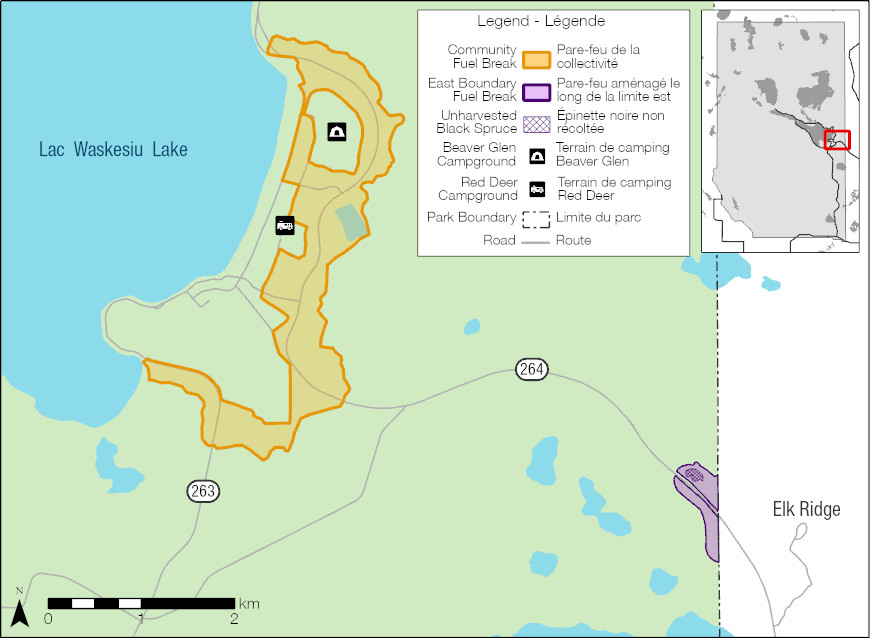
Townsite risk reduction
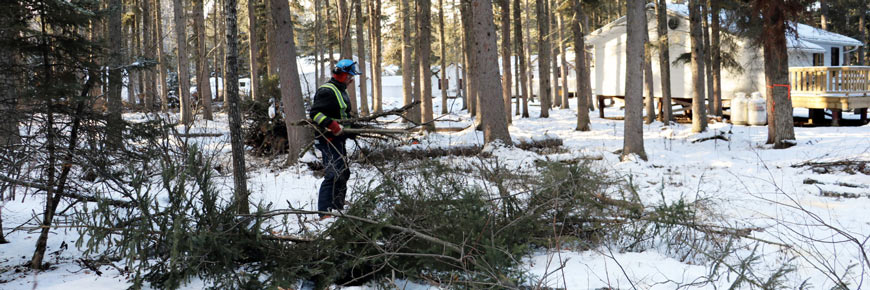
FireSmart demonstration area
The FireSmart demonstration area is 4 hectares of managed vegetation in Waskesiu between the Waskesiu Golf Course and Highway 263. Fuels like dead and decaying plant and tree matter are managed according to the FireSmart program to help protect critical park facilities in the event of a wildfire. See, read and learn about the FireSmart program in practice and understand how to FireSmart properties located on the edge of nature. (see map)
Fuel reduction areas
Pockets of mature and unmanaged vegetation in Waskesiu are highly flammable and reduce the effectiveness of the community fuel break. Fire can spread rapidly from tree to tree and creates embers that quickly ignite multiple fires.
The park is actively managing densely grouped mature spruce trees and brush in Waskesiu. Identified areas were assessed in 2018 and selected for risk reduction operations due to high hazard and proximity of mature spruce trees. Management of these areas helps reduce the risk of wildfire while maintaining healthy aesthetically pleasing vegetation in Waskesiu that represents the surrounding forest. (see map)

What you can do
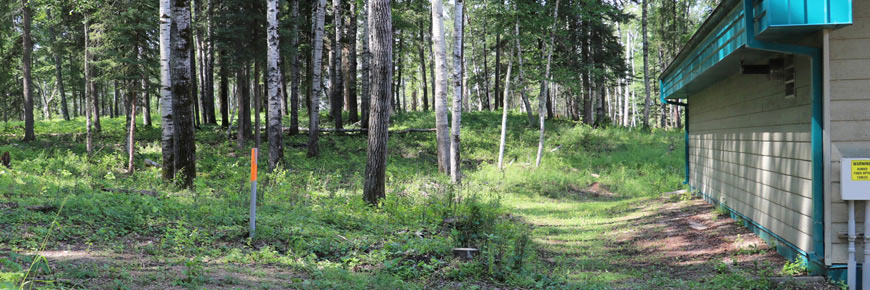
FireSmart is a nationwide program designed to help protect people, property and neighbouring lands from wildfire. Home and business owners can take simple steps to help reduce the risk from potential wildfires. Small actions around a property can help reduce fire spread and improve a home and community’s resilience to wildfire damage.
Get started by following these easy FireSmart tips:
- Remove piles of sticks, dry leaves and fallen trees around your home
- Clear gutters, eaves and vents
- Keep windows clear
- Trim trees
- Keep porches and decks clear or screened
- Screen or seal all soffits
- Take care of your lawn - keep sprinklers handy
Learn how to assess property risk from wildfire using the FireSmart program. Pick up a FireSmart Homeowner’s Manual at the Visitor Centre or visit www.firesmartcanada.ca.
- Date modified :
